Cake was used as a metaphor by my colleague Mark Drinkwater in his 2014 blog post Cryovex: To 86°N and back – in terms of cake! Mark drew a parallel between the different layers of a cake and the heights of operation of campaign work which begin at or below the ice surface, extending through the airborne flights all the way up to the CryoSat satellite orbiting hundreds of kilometres above Earth’s surface. With a nod to his original post, here’s a different take on the same metaphor, which I apply to ESA’s current Arctic campaign and the events that unfolded over the Arctic sea-ice a few days ago on a memorable Friday 24 March.
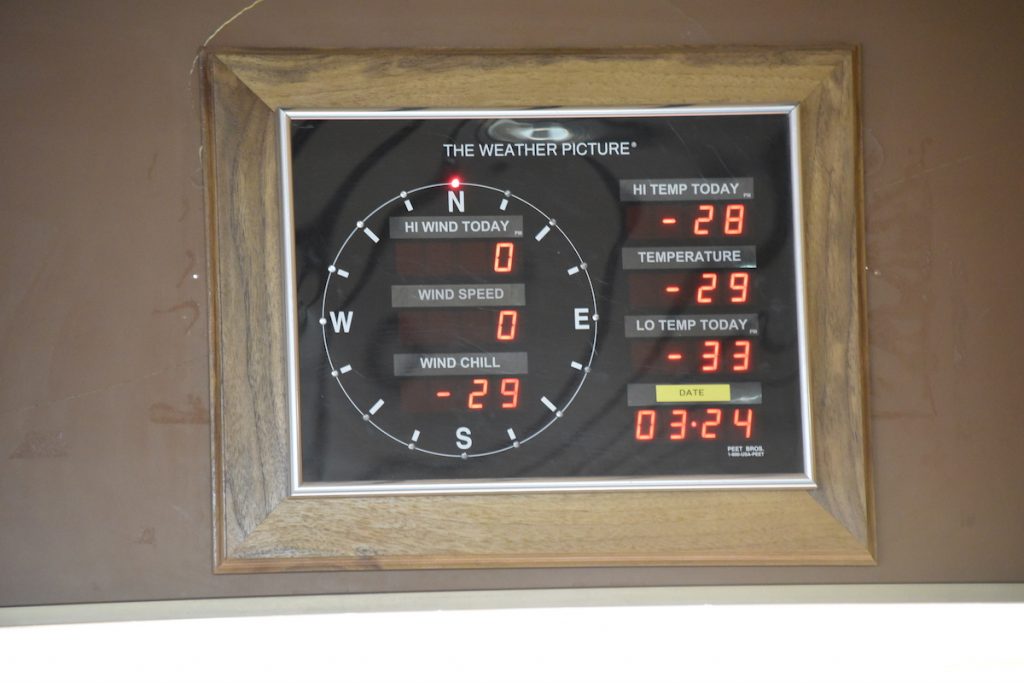
Clear and cold outside – perfect conditions for flying. (ESA)
So why is a successful campaign like baking a cake? Looking at the big picture – as I tend to do – it starts with a clear sense of purpose and what you are trying to achieve. In the case of cake, the occasion could be a birthday, a special occasion or simply something to enjoy with family and friends. The current CryoVEx and KAREN campaign, on the other hand, has two special roles in the European Space Agency’s satellite programmes.
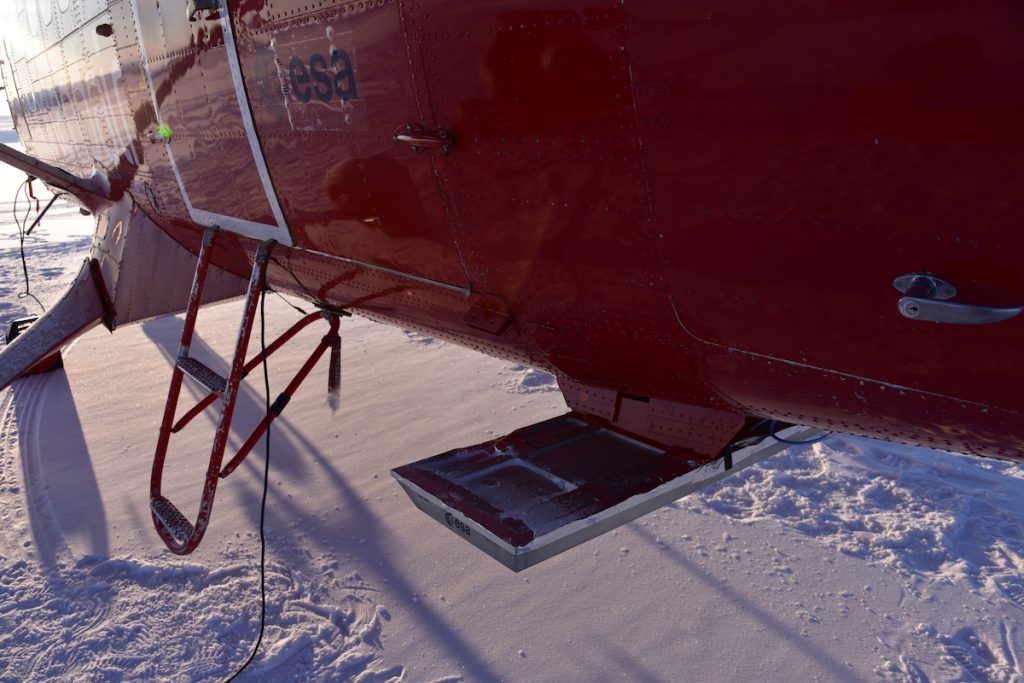
The Twin Otter ready for action with the Ku-band radar antenna below the cabin belly. (ESA)
The first is to validate the measurements and global maps of changing ice thickness produced by ESA’s CryoSat satellite. By inter-comparing ground, airborne and satellite measurements, scientists working on the mission can demonstrate and document the accuracy of the CryoSat mission in monitoring ice-thickness change over time. This ensures that long-term trends in ice conditions observed by the mission in the Arctic and Antarctic owing to environmental change are backed by solid and independent campaign reference measurements.
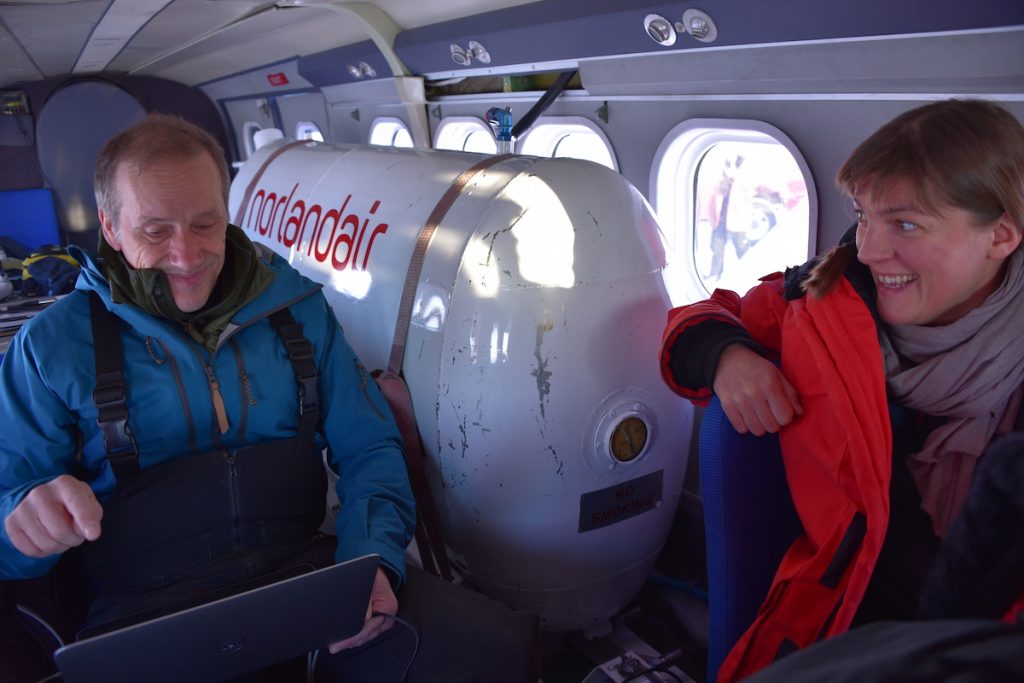
Louise Sorensen and Arne Olsen from DTU getting the instruments ready for the big day. (ESA)
The second role of the campaign is to prepare the future. While the launch and operations of a satellite often represents the public and perhaps the more visible face of a satellite mission, satellite design work starts many years before the actual launch and is absolutely vital to the success of the mission. Nestled at the back of the Twin Otter and installed on 19 inch racks, is a unique Ka-band radar altimeter which is being flown for the first time across Arctic. By combining the new wavelength (Ka-band) with the CryoSat Ku-band wavelength, scientists are able to pinpoint and assess the advantages of having two-wavelengths on potential future CryoSat follow-on missions. As an example, the current campaign will help demonstrate the advantage of two-wavelengths in mapping the thickness of snow on sea ice, information which up to now is unavailable from CryoSat and most other missions. The campaign is also useful to ESA’s engineers who, together with European space companies, will study the details of the radar signals collected during the campaign and use this knowledge in the design of the future satellites.
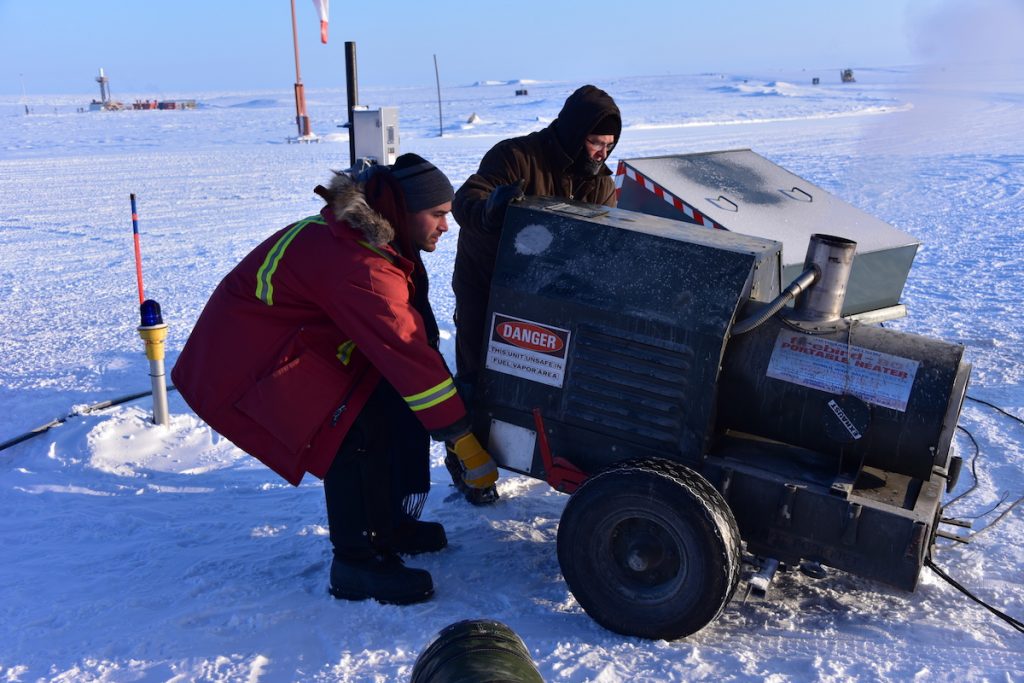
The cold requires special machines to heat up the instruments and the cabin before take-off. (ESA)
A good and trusted recipe is a key to a delicious cake. The same applies to a successful airborne campaign, although the word ‘recipe’ usually morphs into the more unwieldy term ‘Campaign Implementation Plan’, or more commonly CIP in ESA campaigns. No matter – the idea of following a plan to reach a goal is the same. What does change is the length and complexity of plan. To give you an idea of the incredible planning effort in numbers, the CryoVEx/KAREN campaign plan which I carry around with me all the time is over 100 pages long, integrates 56 different participants (scientists, airplane pilots, instrument and logistics experts), covers activities for six aircraft over a period of two months operating in up to 23 different airports as well as ground measurement teams at four locations, and includes valuable details on all the scientific instruments on all of the aircraft as reference.
Two colleagues, Tania Casal and Tim Pearson, have worked tirelessly for two months with campaign participants to integrate all this information. Credit goes to them for creating the ‘recipe’ for a successful and fit-for-purpose campaign.
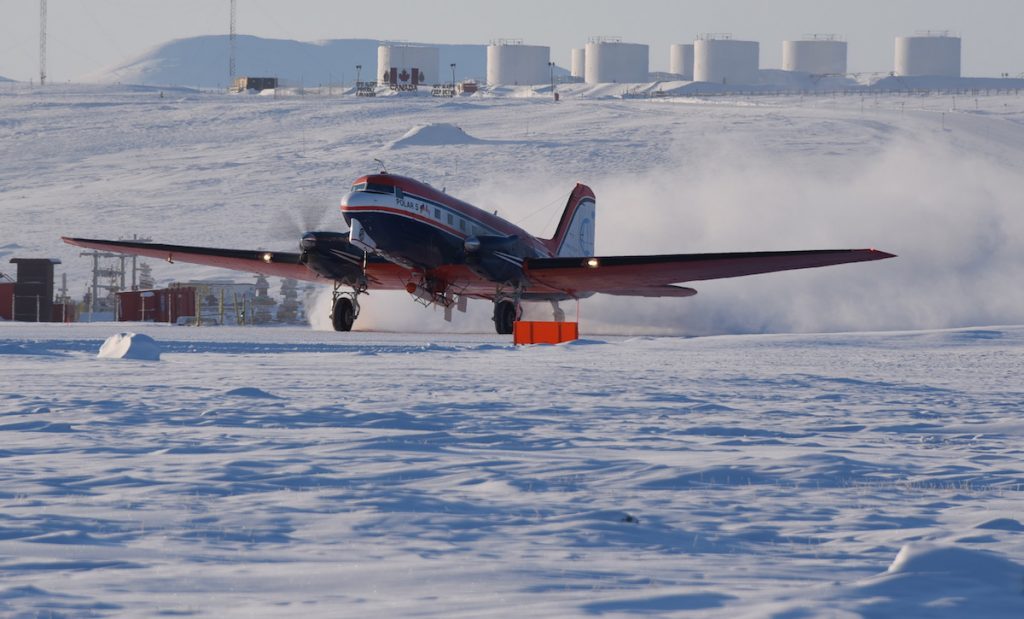
Polar-5 taking off from Alert Base in northern Canada. (ESA)
Just like a cake needs good ingredients, a successful campaign requires the right blend of people and machines to make it happen. In that sense we are fortunate in CryoVEx/KAREN to have some of the top scientists and campaign experts in the field. The list of participants reads like the Who’s Who of Arctic research. This list includes, among others, participants from the Danish Technical University in Denmark, Alfred Wegner Institute in Germany, University College London and University of Leeds in the UK, University of Oslo and Norwegian Polar Institute from Norway, Environment Canada and our US colleagues from NASA and JPL. Other scientific institutes such as LEGOS in France have provided valuable inputs to help design the campaign and will participate in the study of the campaign data. Impressive is not only the list participants, but how they work together as a team. There is continuous exchange between teams and a unique spirit of cooperation which extends beyond scientists to the pilots, logistics support staff and workers at the campaign military bases in Station Nord, Alert and Thule.
A good cook will know that a cake starts as batter, but it isn’t cake until it is baked. This requires an oven with right temperature and environment. The equivalent on a campaign is the weather, the final arbitrator of all activities especially in the Arctic. The only tool in the campaign planner’s arsenal to deal with weather is to allocate enough time and resources to ensure a reasonable chance for a successful flight. This is one reason we are spending over six days at the Alert base in northern Canada.
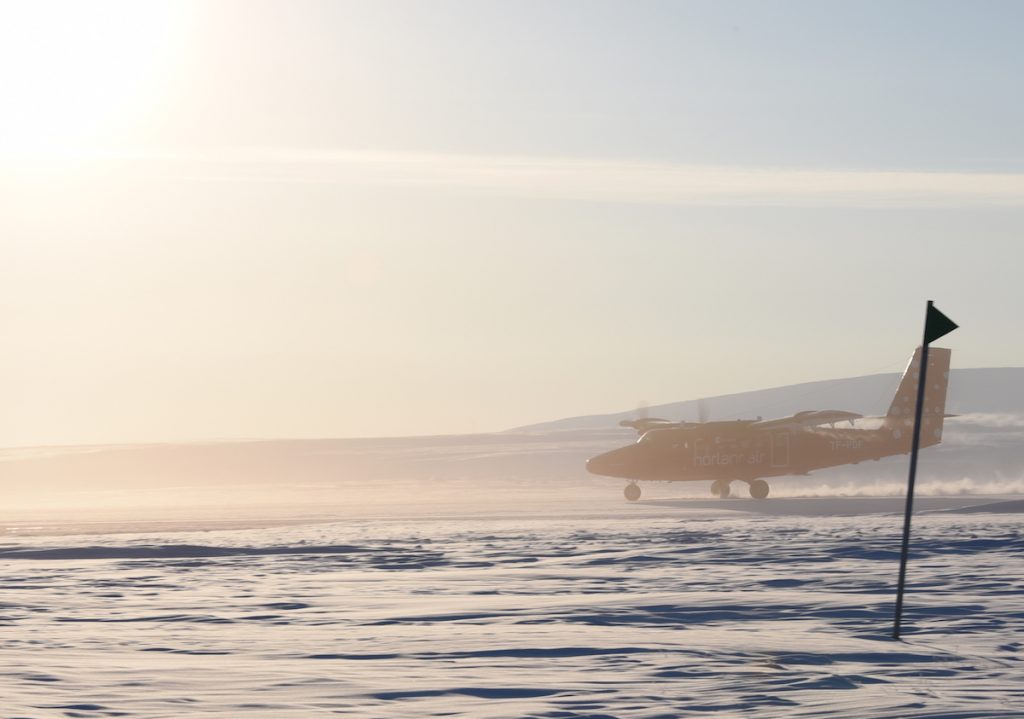
Twin Otter also takes off to rendezvous with NASA’s P3 and Polar-5 over the Arctic Ocean. (ESA)
I finally reach the events of last Friday, 24 March. Taking advantage of near-perfect weather conditions three aircraft from NASA and ESA, with DTU and AWI, joined forces to fly across the Arctic Ocean north of Greenland. Working in tandem and following agreed flight patterns and timings, the planes, which carried a huge suite of instruments, measured the sea ice below in every conceivable way including sea-ice thickness, snow cover, temperature, ice topography and visual state, as ESA’s CryoSat satellite orbited above.
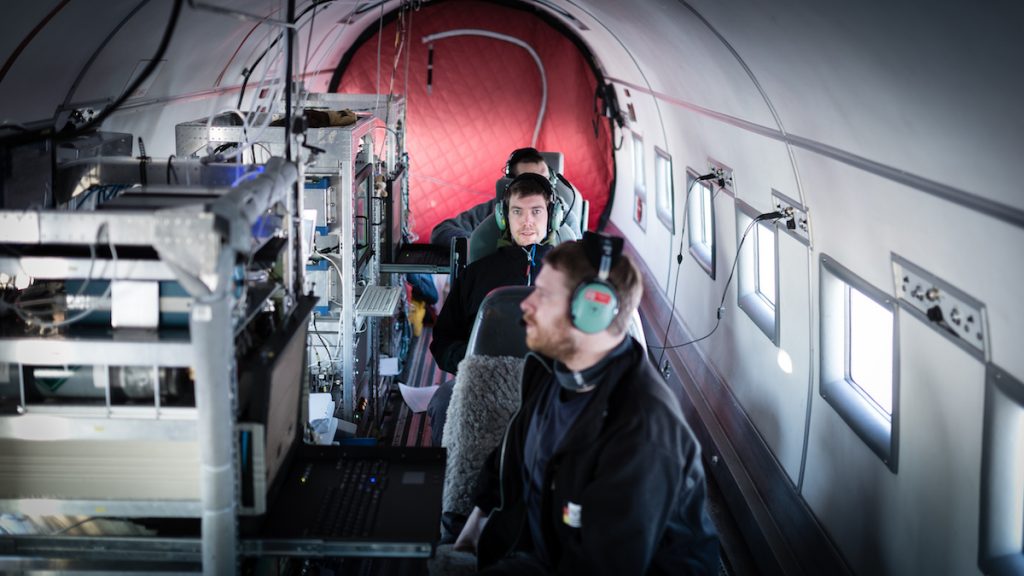
AWI scientists aboard Polar-5 reading their instruments during the flight. (S. Hendricks AWI)
It was unique demonstration of how purpose, plan, people, machines and weather can come together to make a campaign success story. I, for one, plan to have some cake today to celebrate!
Post from: Malcolm Davidson (Head of ESA’s Earth Observation Campaigns) on campaign in the Arctic to validate data from CryoSat and to test new satellite technologies
Read more about the campaign: To the Arctic for CryoSat and beyond








Discussion: no comments